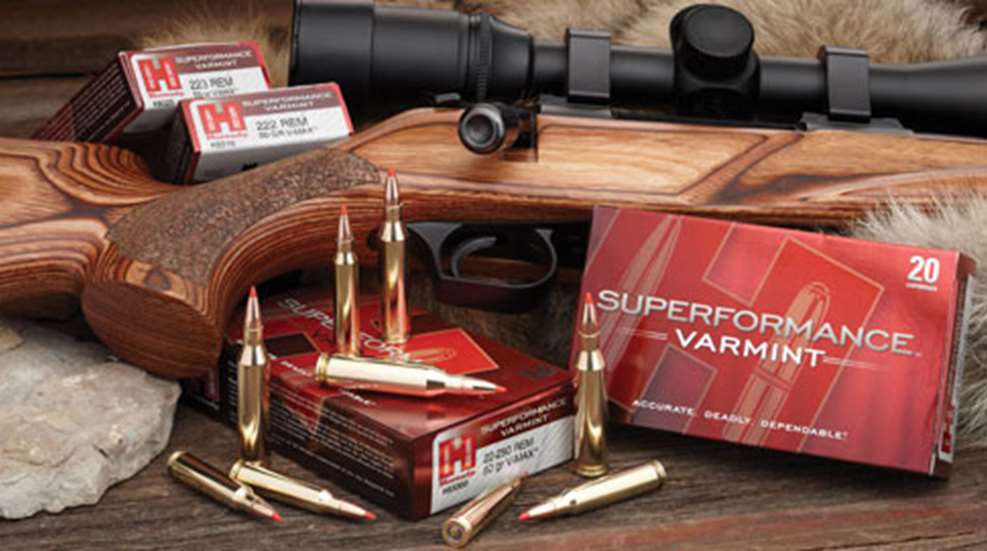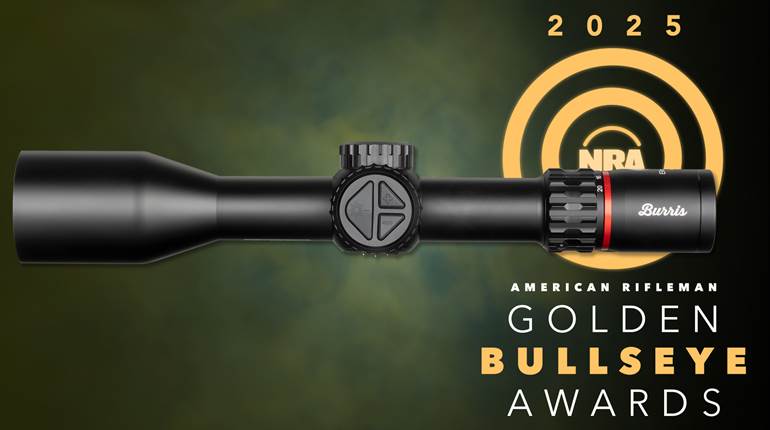
Unveiled earlier this year, Hornady’s Superformance ammunition included cartridge options ranging from .243 Win. to .458 Win. Mag.; however, all loads were optimized for use on big-game animals. That’s about to change with the release this month of Superformance Varmint in .222 Rem., .223 Rem., .22-250 Rem. and .243 Rem. “I had been working on varmint cartridges at the same time as the [big-game] calibers,” explained Dave Emary, Hornady’s chief ballistic scientist. “However, I didn’t quite have the varmint calibers done last year, so we decided to save them for 2011.
“The initial impetus was looking at the .223 Rem. and knowing that I could get a lot more out of a purpose-built bullet for the cartridge, then sweetening the pot even more with higher velocities,” he said. “Then we turned to tuning up other popular varmint cartridges as much possible.”
Changing Expectations
To achieve his velocity goals, Emary revisited propellant technology used in the original Superformance line, as well as the company’s high-performance lever-action load, LEVERevolution. The velocity gains in Superformance Varmint—in some cases they exceed standard offerings by more than 230 fps—are achieved through the use of highly progressively propellants loaded to fill the cases, yet not be compressed. Each propellant is custom-blended and teamed with a specific primer and projectile to achieve higher velocities while maintaining safe pressures, assuring reliable functioning (in semi-automatic rifles), and reducing temperature sensitivity.
Because rifles for varmint shooting, predator hunting and 3-gun competitions come in an array of action types and barrel lengths, these factors too needed attention. Arguably, most varmint and predator hunters use bolt-action rifles; however, AR-15-style rifles are making inroads into these activities, and for 3-gun competitors they’re commonplace. Whereas bolt-actions require little to ensure reliable functioning, such is not the case with semi-automatic rifles.
“We have done extensive testing of the new .223 Rem. load in ARs with barrels from 14½ inches to 24 inches,” said Emary. “The propellants are very progressive and burn out rapidly after peak pressure. The AR’s gas system was originally designed around a 62-grain bullet and about 26.5 to 27.0 grains of powder, and this Superformance Varmint load is pretty close to that in charge weight along with a lighter bullet, and is therefore within the design envelope of the system.”
As for barrel length, Emary reports that because of the propellants’ progressive nature, the .222 Rem. and .223 Rem. lose about 30 fps for each inch of barrel less than 24 inches. That number increases to around 40 fps in .22-250 Rem. and .243 Win.
Superformance Varmint Loads
In time Hornady will load its lead-free NTX projectiles in Superformance Varmint, but for now only V-Max bullets are used; however, because the bullets were designed for very high velocities, no modifications to existing designs were needed. The initial loads include: 50-grain in .222 Rem.; 53-grain in .223 Rem.; 50-grain in .22-250 Rem.; and 58-grain in .243 Win.
The Superformance Varmint load that gains the most velocity over its predecessor is, ironically enough, the “triple deuce.” Thanks to the popularity of the .223 Rem., the .222 Rem. is typically neglected when companies unveil new loads. Not so now that Hornady is breathing new life into this oft-forgotten cartridge. In Hornady’s Varmint Express line, the 50-grain V-Max attained a reported muzzle velocity of 3140 fps; however, the same projectile in Superformance Varmint is touted to achieve 3345 fps.
Attaining Emary’s external-ballistic goals for the .223 Rem. required a new bullet design. “With the exception of match bullets designed for the .223 Rem., most all varmint bullets have been designed around the available head height (ogive length) of the .22-250 Rem.,” he explained. “But you’re giving up a lot of downrange performance in the .223 Rem. by using bullets in it that are constrained to the .22-250 Rem. envelope.” For this reason he purpose-built the 53-grain V-Max.
The new projectile is only one advantage; using Superformance propellant technology, the projectile is pushed to 3465 fps, as opposed to a less-aerodynamic 55-grain V-Max being expelled from a muzzle at 3240 fps in the older Varmint Express load. Emary pointed out that the new .223 Rem.’s propellant/bullet combination gives it “…virtually [identical] ballistic performance to traditional .22-250 Rem. ammunition.”
There are similar gains with all Superformance Varmint calibers, and that will translate to enhanced long-range performance. When rifles are zeroed at 200 yards, the drops at 400 yards are 1.66 inches to 1.8 inches less than when shooting comparable Varmint Express loads.
Testing Superformance Varmint
Prior to receiving Superformance Varmint samples for range work, I had an opportunity to field-test some loads on a variety of varmints and small game while hunting the Eastern Cape of South Africa. To say I was impressed would be an understatement. I shot the 53-grain .223 Rem., from a Thompson/Center Icon Precision Hunter and it easily lived up to its name. During the sight-in session sub-m.o.a. groups were commonplace, but more telling was what occurred afield. As expected the 53-grain V-Max produced terminal performance consistent with its predecessors, but what was readily apparent was the much flatter long-range trajectory. Traditional hold-overs and thinking went by the wayside.
Shortly after returning from Africa I received Superformance Varmint samples in .222 Rem. and .223 Rem. To evaluate the loads’ performance, each was subjected to accuracy testing, chronograph testing and, with regard to the .223 Rem., function testing. Following American Rifleman protocol, accuracy testing was conducted at 100 yards and group size was measured center-to-center for five consecutive shots. The results of five groups from each load are listed in the accompanying table.
Shooter Ready
What price can you expect to pay for such performance? Actually, when compared to most ammunition, and particularly those featuring higher-quality projectiles, Superformance Varmint is less expensive and, at times, significantly so. Superformance Varmint is beginning to ship to retailers now, so you can expect to see it on gun-store shelves over the next month or two.
Like its predecessor, Superformance Varmint rewrites the rules of cartridge performance, and redefines what each is capable of. It’s time to dust off the “triple deuce” (.222), rethink the .223 Rem., quicken the hotrod .22-250 Rem., and diversify the .243 Win.’s duties. Varmint shooters can now get in on one of the biggest advancements in ammunition performance in the past 50 years.
Be sure to check out the Hornady Superformance Varmint in action on YouTube.





































